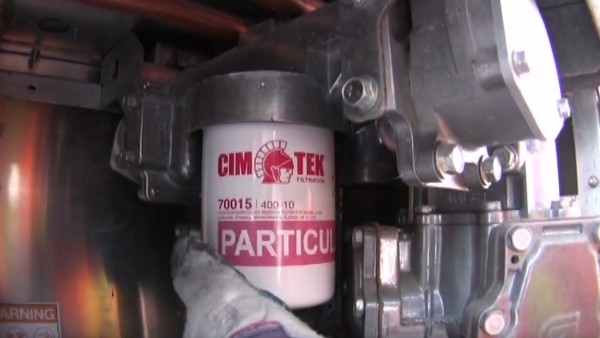How Many Micron Fuel Filter

Everyone knows that the oil/fuel filters on your car or truck should be changed regularly. You practice this because you desire your vehicle to last longer and proceed to operate properly. The aforementioned goes for the filters in your fuel dispensers.
Filters are an important part of the UST dispensing system, and need to be changed regularly to maintain proper performance. A helpful hint to manage your filter changes is to write the date you changed the filter in a visible spot with a permanent marking. When the date is marked, it is easier to determine when the filter needs to be inverse once again.
Information technology is recommended that filters be changed at least once a year for normal fuel output facilities. College volume facilities may need to alter filters more frequently. Other factors that dictate how oft the filters are changed include quality of fuel passing through the delivery system and the presence of water in the organisation.
Choosing the correct filter for the fuel system will besides decide the life of the filter. Filter material is measured in microns. Filters with a larger micron rating permit larger particles through the system. Unremarkably, a ten-micron filter is used for unleaded gasoline, and a 30-micron filter is used for diesel fuel. A 30-micron filter used in an unleaded dispenser unit of measurement tin allow unwanted particles to pass through to the customer'southward vehicle. Likewise, a 10-micron filter used in a diesel dispenser will get plugged more rapidly considering of the consistency of diesel fuel.
Evidently, the fuel filter is designed to catch debris, bacteria and water that menstruation through the commitment organisation. As the system operates, and these items keep to build upwards, your filters get clogged. Chock-full filters cause ho-hum product menses, and slow product menstruation causes unhappy customers. Also, clogged filters tin can be hard on your system. This can cause the pump to "starve" or cause back-pressure level, depending on the blazon of delivery system you have. Older suction pumps generally struggle to keep acceptable flow rate anyhow, so you should avoid any unnecessary restrictions. Removing the filters is not the answer. Without the filters, all of the debris and water that was in the tank is now passed through the system and in to your customer's vehicle. This too volition cause unhappy customers.
Clogged filters need to be changed. When doing this, it is of import to have the system disabled to avoid a fuel spill. Proper steps should be taken to assure that no fuel is lost. Fuel pans that fit below the dispensers in a combination with fuel absorbent pads can help go on the fuel spillage to a minimum. Fuel that is lost beneath dispensers without containment goes directly into the surround, and this can add up over the life of a site. Dispensers that are equipped with secondary containment should have the same steps taken. Containment was designed to grab spilled fuel, but not shop fuel for whatever corporeality of time. If spillage occurs, the fuel should exist removed immediately.
When filters are changed, they should be monitored to assure that at that place is a tight seal. Leaks can occur when the filter is not securely tightened. The filters tin can vibrate lose with operation and cause a severe leak under the dispenser. In addition to a leaking seal, tiny holes tin can develop through rust spots. Routine dispenser checks are a must!
Changing filters assures that the highest quality and quantity of fuel is dispensed to the customer.
How Many Micron Fuel Filter,
Source: https://www.gasdevs.com/blog/changing-fuel-filters-10micron-or-30micron-and-how-often/
Posted by: zamudiofolisn1984.blogspot.com


0 Response to "How Many Micron Fuel Filter"
Post a Comment